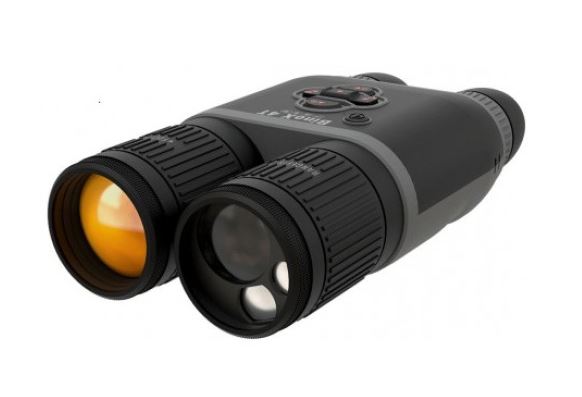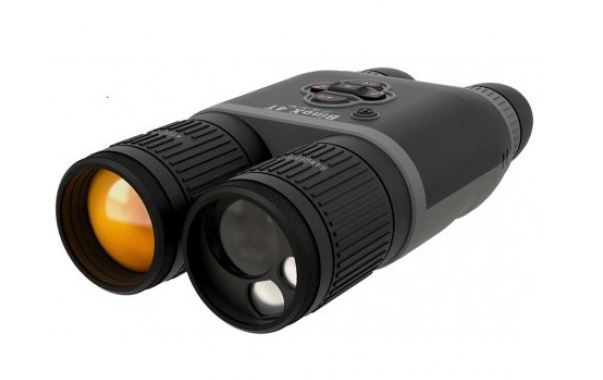Products:
- Hawke Vantage SF 3-12×44
- Hawke Vantage SF 4-16×44
- Hawke Vantage SF 6-24×44
- Hawke Vantage IR 2-7×32 AO
- Hawke Vantage IR 3-9×40
- Hawke Vantage IR 3-9×40 AO
- Hawke Vantage IR 3-9×50
- Hawke Vantage IR 3-9×50 AO
- Hawke Vantage IR 4-12×40 AO
- Hawke Vantage IR 4-12×50
- Hawke Vantage IR 4-12×50 AO
- Hawke Vantage IR 4-16×50 AO
- Hawke Vantage IR 6-24×50 AO
- Hawke Vantage IR 4-16×50 AO Rimfire
- Hawke Vantage 30 WA IR 1-4×24
- Hawke Vantage 30 WA IR 2.5-10×50
- Hawke Vantage 30 WA IR 3-12×56
- Hawke Vantage 30 WA IR 1.5-6×44
- Hawke Vantage 30 WA IR 3-9×42
- Hawke Vantage 30 WA FFP 4-16×50
- Hawke Vantage 30 WA SF IR 4-16×50
- Hawke Vantage 30 WA SF IR 6-24×50
- Hawke Vantage 30 WA FFP 4-16×50
- Hawke Vantage 30 WA FFP 6-24×50
- Hawke Vantage 4×32
- Hawke Vantage 2-7×32
- Hawke Vantage 3-9×40
- Hawke Vantage 3-9×50
- Hawke Vantage 4-12×40
- Hawke Vantage 30 WA FFP 6-24×50
MOUNTING THE RIFLESCOPE
Warning: Be sure that the firearm is not loaded. Always practice safe firearms handling.
Always check that the diameter of the riflescope body tube matches the diameter of the scope rings that you wish to use. Always purchase the best rings you can afford making sure that the base of the rings will fit your rifle. High recoil rifles may require rings fitted with a recoil stop pin.
1. Fix the rings to the rifle base – do not completely tighten.
2. Lay the riflescope into the rings. The scope should be mounted as low as possible without touching the barrel, rear sight, or the receiver.
3. Before tightening the rings, look through the scope in your normal shooting position. Adjust the scope (forward or backward) until you find the furthest point forward (to ensure maximum eye relief) that allows you to see a full field of view.
4. Rotate the scope in the rings until the reticle pattern is perpendicular to the bore and the elevation turret is on top.
5. Tighten the screws evenly on each side.
Warning: Avoid over tightening the rings. This can damage the scope affecting performance or rendering it inoperable. (16 in/lbs) (1.33 ft/lbs) (1.8 Nm) for ring cap screws and (30 in/lbs) (2.5 ft/ lbs) (3.4 Nm) for ring base screws.
Warning: When installing a riflescope to a rifle with high levels of recoil, always ensure that there is adequate eye relief. This will avoid eye injury.
OCULAR LENS ADJUSTMENT
All Hawke riflescopes are fitted with an adjustable ocular focus. To focus your eye characteristics to the riflescope, giving a crystal clear picture of the reticle, carry out the following adjustment.
1. Hold the scope about three or four inches from your eye and look through the eye piece at a blank, flatly lit, bright area such as a wall or open sky.
2. If the reticle is not sharply defined instantly, turn the eyepiece (either direction) a few turns. Quickly glance through the scope again. If the focus has improved, but is still not perfect, continue focusing.
3. If the focus became worse, turn it the opposite direction.
Warning: Never look at the sun with a riflescope, it may permanently damage your eyes.
TURRET ADJUSTMENT
After mounting the scope remove the windage and elevation caps to expose the adjusters.
Each click of adjustment is measured in MOA (minutes of angle) on the target. 1 click = 1/4 MOA = 1/4” at 100 yards.
Therefore at different ranges, each click of adjustment changes: 50 yards = 1/8” (50m = 4mm), 100 yards = 1/4” (100m = 7mm), 200 yards = 1/2” (200m = 15mm), 300 yards = 3/4” (300m = 22mm).
PRE-ZEROING
Pre-zero sighting can be done either visually or with a bore sighting collimator. If a bore sighting collimator is not available, it is recommended to pre-zero visually.
1. With the firearm in a steady rest position, open the action of the firearm and look along the bore to a predetermined target (at approximately 50 yards).
2. Scopes fitted with an adjustable objective or side focus should be adjusted to the 50 yard position. Set a variable power scope to mid-power.
3. Remove the caps from the windage and elevation turrets. Adjust the windage and elevation adjusters to position the reticle on the center of the target.
4. For windage adjustment, turn the windage adjustment turret clockwise to move the point of impact left and counter clockwise to move the point of impact right. In the same manner, adjust the elevation by turning the elevation adjustment clockwise to lower the point of impact and counter clockwise to raise the point of impact.
Note: When using windage adjustable rings, make major windage correction with them. In certain shooting situations such as close range air gunning when special elevation adjustable rings are not available, the rings may have to be shimmed. Only final precision adjustment should be made with the scopes adjustment turrets.
ZEROING WITH LIVE AMMUNITION
Warning: All shooting should be carried out at an approved range or other safe area. Eye and ear protection is recommended.
Final sighting-in of your rifle should be carried out with live ammunition, based on your preferred target distance.
Warning: If a bore sighting collimator or any other bore obstructing device was used, it must be removed before zeroing with live ammunition. An obstruction can cause serious damage to the gun and possible injury to yourself and others nearby.
Sighting in should be at the distance that you are normally going to shoot. The parallax should be set to this distance during the sighting in process. Set variable power scopes to highest power then from a steady rest position fire three rounds at a target. Observe point of impact on the target and adjust windage and elevation turrets as needed to correct aim. Repeat until point of aim and point of impact are the same. When you are happy with the zero, replace the turret covers.
PARALLAX ADJUSTABLE MODELS
To give the best accuracy all riflescopes should be parallax error-free at the required target distance. Non-parallax adjustable riflescopes are set at 100 yards to be parallax error-free. Any other distance can cause a parallax error, this will show itself as a movement of the reticle on the target. Riflescopes with parallax adjustment allow the shooter to correct this error for any target distance. After the zero-in process, we recommend that the parallax adjustment is checked.
The riflescope has printed pre-set distance markings on the parallax adjuster, these are only a guide to get you started. Shooters should test and adjust the parallax settings by using a measured distance target to set the optical system to your personal eye condition. It is best to first bench rest your rifle, set the riflescope magnification to the maximum setting, then proceed to check the parallax markings, if required be prepared to re-mark the adjuster to your own personal settings.
ILLUMINATION
The illumination rheostat is located on the saddle.
High brightness settings are recommended for daytime use when ambient light is bright, this will allow the reticle to be visible against dark backgrounds. At times of low light such a dawn or dusk, a lower brightness setting is recommended. The lower settings may not be visible during bright daylight. Reticles are black in the off position or if the battery is defective.
All Hawke illuminated scope models use a CR2032 coin style lithium battery. To insert a battery unscrew the battery compartment cap on the top of the rheostat adjustment turret and insert a new battery “+” side up.
Warning: Always hold onto the lower half of the rheostat when loosening or tightening the battery compartment cap to ensure no damage is done.
MAINTAINING YOUR RIFLESCOPE
Each Hawke riflescope is a precision instrument that deserves a high level of care. During manufacture the scope is purged with dry nitrogen and sealed to give a lifetime of reliability. Do not attempt to disassemble or clean the scope internally.
Keep the protective lens covers in place when the scope is not in use.
The external lens coatings should occasionally be wiped clean with the lens cloth provided or an optical quality lens paper. Remove any external dirt with a soft brush to avoid scratching the lens.
Note: Unnecessary rubbing or use of a coarse cloth may cause permanent damage to lens coatings.
To clean the external surface of the scope it is recommended that a silicone impregnated cleaning cloth is used to protect the scope against corrosion.
Tips for safe storage:
- Always store in a moisture-free environment.
- Never store the scope in places such as the passenger compartments of vehicles on hot days, the high temperatures could adversely affect the lubricants and sealants.
- Avoid direct sunlight that can enter the objective or the ocular lens, damage may result from the concentration (burning effect) of the sun’s rays passing through the scope.
HAWKE LIFETIME WARRANTY
Subject to the limitations noted below, Hawke guarantees this product to be free of defects in materials and workmanship for the lifetime of the original owner. (The warranty is legally limited to 10 years within Europe.) If your Hawke product is found to have defects in materials or workmanship, we will repair or, if repair is not possible, replace the product with an equivalent.
The warranty does not cover failure caused by abuse or excessive wear and tear even within the warranty period.
Please note your proof of purchase should accompany any warranty claim. You can register your purchase with us now at www.hawkeoptics.com/registration
For full warranty details or to make a claim please see www.hawkeoptics.com/warranty
Patents Pending: CN No. 201410665146.8. No. 104567544A. US No. 14/547,438. GB No. 1420459.8. Community Design Registration No. 002 343 939-0001. European Community Design Registration No. 002610329-0001 to 0007.




